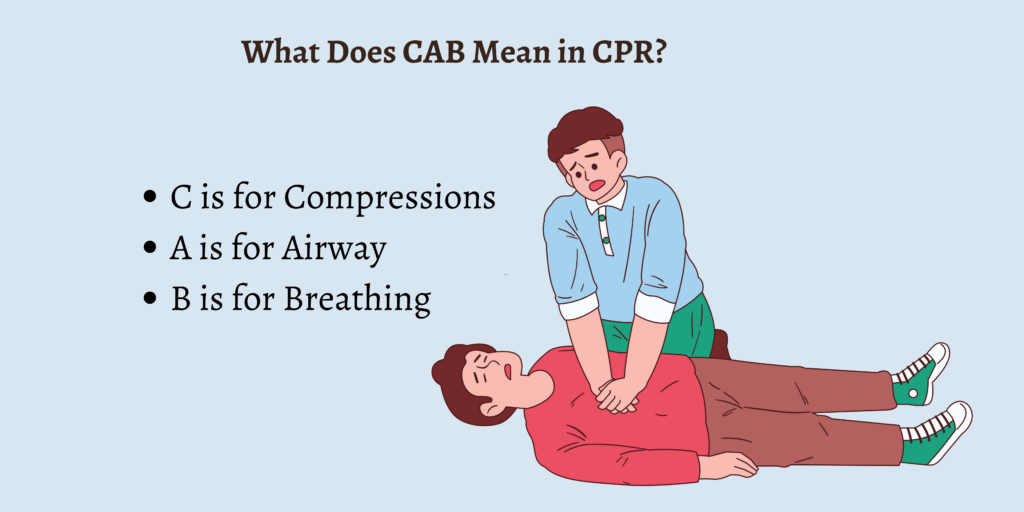What Does CAB Stand for in CPR? Need-to-Know Info
Performing CPR immediately doubles or triples the chances of a person’s survival after they have suffered from cardiac arrest. Hearing this makes me realize even more as to how vital it is for all of us to learn the basics of CPR.
If you have had CPR training, you might be aware that the CPR sequence has changed from ABC to CAB. In case you weren’t familiar with this piece of information, your next question might be why it changed in the first place.
Well, that’s the question we’ll be answering here today. In this article, we will be discussing the meaning of the CAB acronym in CPR and the reason it was changed from ABC.
What Does CAB Mean in CPR?

CAB is a vital acronym to know about during CPR training. Here is what it stands for:
C is for Compressions
When chest compressions are performed, it aids in promoting blood circulation and the blood flow gets restored when a person’s heart stops beating. Experts believe that chest compressions form the most crucial part of CPR.
Once you place the victim flat on their back, put the heel of your hand in the middle of their breastbone. By placing one hand on top of it, interlace your fingers, and then begin pushing into the victim’s chest about two inches deep.
The rate of chest compressions to follow is 100 to 120 compressions per minute.
A is for Airway
Once the chest compressions have been given, the next step in CPR is to clear the airway of the victim.
Lift the head of the victim gently and place the palm of one of your hands into their forehand. Use your other hand to tilt their head back and slightly lift their chin forward.
This step helps in opening the airway of the person so that they can receive rescue breaths. Once the airway is open, try to look for any foreign objects that could be blocking the airway of the victim.
B is for Breathing
The last step in CPR is to deliver rescue breaths. This helps in delivering oxygen to the lungs of the victim.
After the victim’s airway is open, pinch their nose shut before you put your mouth over theirs. The rule is to give a series of two rescue breaths in between 30 chest compressions. Monitor their chest after providing every rescue breath to check if the chest rises.
If their chest does rise, deliver the second rescue breath. Repeat this cycle until the arrival of emergency medical services.
Why Was the Order Changed from ABC to CAB in CPR?
As per the American Heart Association, the sequence was changed because in the previous ABC method, the chest compressions were often delayed while the rescuer was attempting to open the victim’s airway or get ventilation equipment.
By changing the order, the victim got to receive chest compressions sooner. When chest compressions are provided first, the victim is required to hold their breath only for an extra 18 seconds while the blood circulation gets going again. Therefore, the change was a positive one.
FAQs
What does CAB stand for?
CAB stands for circulation, airway, and breathing.
What is ABC vs CAB in CPR?
ABC was used previously in CPR which followed the order of airway, breathing, and chest compressions. With CAB, though, the order has been renewed and chest compressions are now performed first.
When was the CPR order changed from ABC to CAB?
The CPR order was changed from ABC to CAB in 2010.
Conclusion
More than 350,000 out-of-hospital cardiac arrests occur in the United States every year. This number alone should be reason enough to know how to perform CPR so that you can adequately help the ones in need.
By knowing the basics of CPR, you can stay calm in emergency situations and save someone’s life in the process. Read up about the details of the new CAB acronym mentioned above and improve your knowledge regarding the process of CPR.





